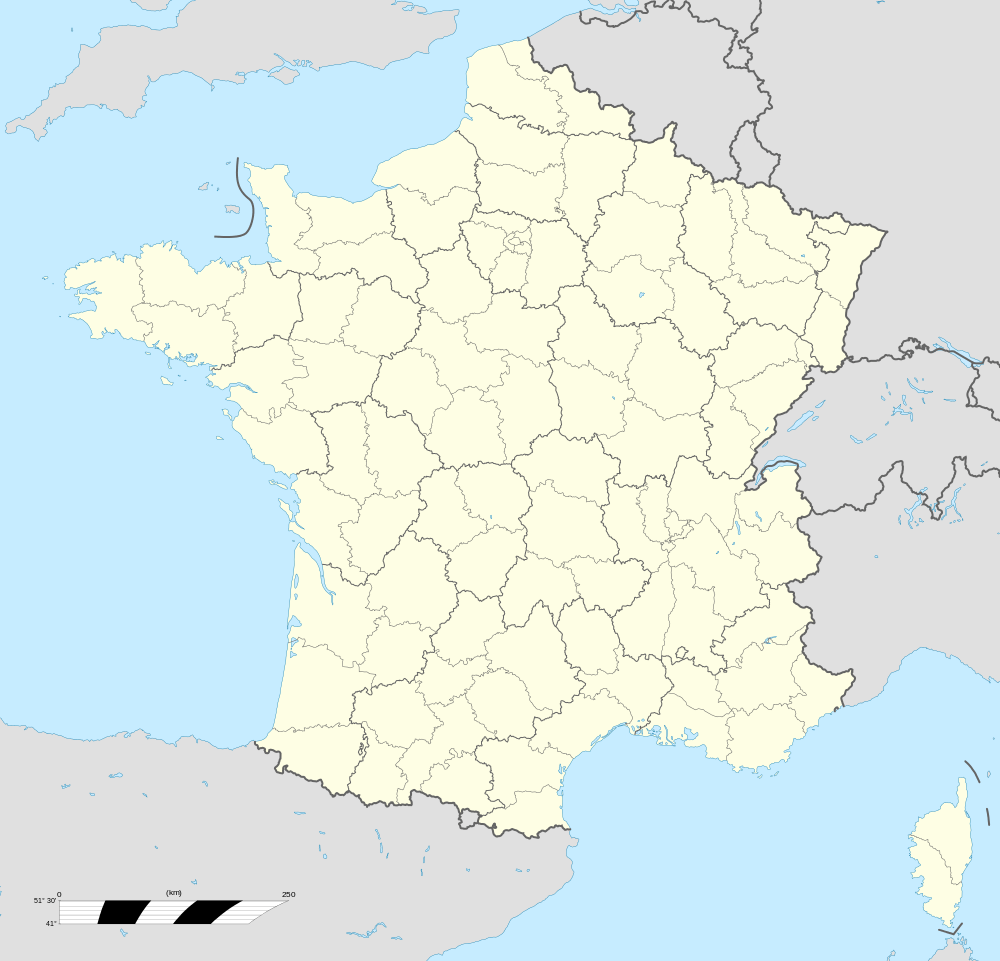CentraleSupélec
| CentraleSupélec | |
|---|---|
 | |
| Established | 1st January 2015 |
| Type | Grand établissement, French Grande École |
| Budget | 95 millions d'euros |
| President | Hervé Biausser |
| Students | 5,000 |
| Postgraduates | 1,000 engineers/year |
| 500 | |
| Location | Châtenay-Malabry, Gif-sur-Yvette, Metz, Rennes (France), France |
| Affiliations | Université Paris-Saclay, Centrale Graduate School, CESAER |
| Website | |
CentraleSupélec is a French graduate-level institution in engineering sciences. It was established on January 1, 2015 as a result of a merger between two leading grandes écoles of France - École Centrale Paris and Supélec (École Supérieure d'Electricité). It is one of France's most prestigious and selective institutes, and is highly regarded internationally for its high quality of education and graduates. The school has a rich tradition and has produced many of France's leading industrialists, engineers, scholars and experts across several disciplines.
CentraleSupélec has close ties with top universities around the world, such as Georgia Institute of Technology, University of Cambridge, ETH Zurich, RWTH Aachen, National University of Singapore, and Tsinghua University.
It is a founding member of the University of Paris-Saclay (consortium of leading research universities in France), and also a member of the TIME (Top Industrial Managers for Europe) network and the CESAER association of leading European engineering schools.

History
École Centrale des Arts et Manufactures (École Centrale Paris)
École Centrale Paris was founded in 1829 on a private initiative by Alphonse Lavallée, who became its first president, and three scientist associates: Eugène Peclet, Jean-Baptiste Dumas, and Théodore Olivier. The founding vision was to educate multidisciplinary engineers for the emerging industrial sector. The institution was offered to the French state in 1857 by its creator, Alphonse Lavallée.
Initially located in the Hôtel de Juigné (now Hôtel Salé and home to the Musée Picasso), it was transferred to rue Montgolfier in 1884, where it stayed until 1969. Its current location neighbours the Parc de Sceaux.
École Supérieure d'Electricité (Supélec)
Supélec was founded in 1894 by Eleuthère Mascart, a prominent academic who was elected as a Perpetual Member and Secretary of the prestigious Académie des Sciences and Foreign Member of the British Royal Society. He was also a Professor at the Collège de France, and recipient of the Bordin Prize in 1866 as well as the Grand prix de l'Académie des sciences in 1874. Supélec was created in order to educate engineers for the then booming electrical industry.
Supélec was originally based in Rue de Staël, 15th district of Paris. It was then relocated to Malakoff close to Porte de Vanves and Gif-sur-Yvette in 1975, the latter in which the main campus is currently located. A second campus was established at Rennes in 1972 and a third at Metz in 1985.
Rankings
Prior to the merger, École Centrale Paris was widely considered to be among the top 3 engineering schools of France, and Supélec was usually ranked among the top 6. The latter is also a reference in the field of electric energy and information sciences and ranks among the world's top institutes in electrical and computer engineering, and according to salary surveys its graduates are among the highest paid of all French graduates.[1]
Partnerships
CentraleSupélec Alliance
Since December 2008, a strategic alliance was announced between the two schools, known today through the common brand of CentraleSupélec. Hervé Biausser became the director in 2013, 1 September, while keeping the directorship of Centrale Paris. He realized the merger between these two schools. CentraleSupélec now has four campuses in France: Châtenay-Malabry, Gif-sur-Yvette, Metz and Rennes.
Université Paris-Saclay
Since 2008, École Centrale Paris and Supélec participated in the creation of the campus of Paris-Saclay. Université Paris-Saclay is a French mega university which is currently under development, which aims to become the top university in continental Europe.
References
- ↑ For example, see ranking from L'Expansion (fr)